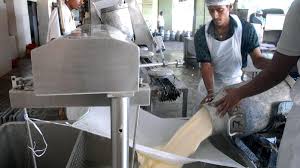
India has taken the lead as the world’s largest milk producer, boasting a remarkable output of 239 million metric tons (MMT). Union Minister of Animal Husbandry and Dairying, Rajiv Ranjan Singh, shared in the Lok Sabha that the country has set an ambitious goal to ramp up milk production to 300 MMT over the next five years. This impressive growth has been largely fueled by the Rashtriya Gokul Mission (RGM), which was initiated back in 2014.
India’s Position as the Leading Milk Producer
India’s dairy sector has experienced impressive growth, making it the top milk-producing nation globally. It contributes more than 24% to the world’s total milk production. Interestingly, the average milk consumption per person in India stands at 471 grams a day, which is quite a bit above the global average.
Key Facts About India’s Dairy Sector
- Current Milk Production: 239 MMT
- Global Share: Over 24%
- Target by 2030: 300 MMT
- Growth in Milk Production (since 2014): 63.5%
- Contribution to GDP: 4.5%
- Employment Generation: 10 crore people, 75% of whom are women
Impact of the Rashtriya Gokul Mission (RGM)
The Rashtriya Gokul Mission (RGM) was launched in 2014 to strengthen India’s dairy industry. This initiative has introduced numerous reforms and programs focused on improving both the quality and the quantity of milk production.
Objectives of RGM:
- Conservation of Indigenous Breeds: Development and conservation of native cattle breeds like Gir, Sahiwal, Red Sindhi, and Rathi.
- Genetic Upgradation: Use of high-genetic merit bulls to improve breed quality.
- Artificial Insemination (AI): Strengthening the breeding network and expanding AI services to farmers.
- Dairy Infrastructure Development: Encouraging modern milk processing units and cold storage facilities.
- Farmer Welfare Programs: Making dairy farming more profitable through government support.
Future Roadmap: India’s Dairy Vision for 2030
To achieve the ambitious target of 300 MMT by 2030, the government has introduced several measures to enhance milk production and support farmers’ incomes. Here are the key strategies for growth:
1. Increasing AI coverage to unlock genetic potential.
2. Expanding dairy cooperatives and fostering private sector participation.
3. Strengthening disease control measures through vaccination programs.
4. Embracing climate-resilient dairy farming to tackle environmental challenges.
5. Enhancing export potential to make India a significant player in the global dairy market.





